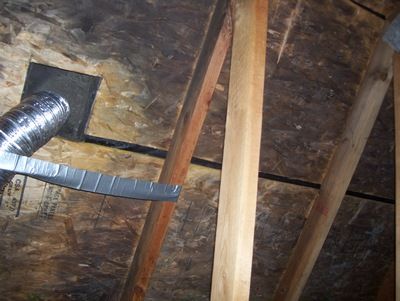The Menace in the Attic
There has been a lot in the news in the past few years concerning mould in our homes and what to do about it, particularly with the summer floods in Toronto and Alberta. As a result, we have become better educated about mould’s impact on our health and property value. We have also learned that it can remain hidden in parts of our home and when we need to call in the experts.
 One area where mould can grow unnoticed is in the attic. But this is one ‘out-of-sight’ problem that should never be ‘out-of-mind’. Ignoring the problem won’t make it go away.
One area where mould can grow unnoticed is in the attic. But this is one ‘out-of-sight’ problem that should never be ‘out-of-mind’. Ignoring the problem won’t make it go away.
Mould in an attic space is most often caused by one of two factors; a leak that allows unwanted moisture in, or because moisture is building up in the attic. There are various clues to be found to indicate a problem such a general blackening of the roof underside and rafters, darkening of the insulation itself, and specific areas of black staining.
Some of the root causes of mould in the attic can be fixed by a DIY’ers, but most are best left to professionals with the proper experience, know-how and equipment. Working on a roof or in an attic is dangerous in itself. Doing so with heavy shingles or large sheets of plywood can be deadly.
Here are a few of the most common Causes and Cures of mould in the attic:
1. Blocked soffit vents are often the cause of a general mould problem in an attic. Specially designed baffles can be added to return airflow, or simply pull back the insulation from the edges.
2. Insufficient roof vents means insufficient air-flow that will lead to moisture build-up.
3. Roof leaks, caused by worn-out, broken or cracked shingles are obviously a sign of trouble. Replacement usually means the whole roof and if the shingles have been leaking for a while, be prepared to have to replace some of the roof sheathing and insulation at the same time.
4. Bathroom fans and dryer vents exhausting into the attic space are a no-no. The warm, humid air should be vented directly to the outside. Failure to do so means moisture accumulation and higher temperatures than normal in the attic – perfect for mould growth.
5. Step-flashing leaks, in side-split homes, can introduce the moisture needed for mould growth in an attic. Often awkward to check without invasive deconstruction, it can usually be done without the need for reroofing.
6. Plumbing vent stacks, attic vents or other breaks in the roof surface need special attention. Gaskets and flanges around these items can become brittle over time and cracks can form. They can be resealed using a long-lasting silicone sealant or replaced entirely.
7. Chimneys are another common area to leak. The flashing must be maintained to ensure a water tight seal.
8. Gable vents that are plugged or too small can lead to poor airflow and a build-up of moisture.
9. Holes in the tops of walls and ceilings for plumbing, heating and wiring can leak indoor air into the attic space. These can be easily sealed using expanding spray foam in a can.
10. Pot lights, if not properly installed, can leak air into the attic space.
In addition to identifying and rectifying the cause of the mould-growth problem itself, if the problem has been ongoing for years, there may also be hidden damage that needs attention, such as;
1. Delamination roof sheathing, the separation of the layers in the plywood occurs if moisture has been building up for some time.
2. Structural rot can occur if rafters have been subjected to ongoing moisture.
3. Premature shingle breakdown can result from constant moisture. Moisture reduces the life of many asphalt shingles causing them to crack and curl prematurely. If this happens, reshingling is necessary.
If the home inspection reveals these issues, it is best to make sure you understand the inspectors’ recommendations and discuss the next steps before contacting a qualified contractor to repair.
If you aren’t moving any time soon, get to know your attic. Open the hatch once a year and look for changes.
Courtesy of Lighthouse Inspections
